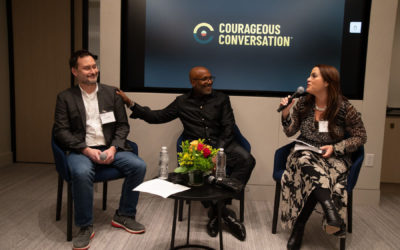By Elijah Anderson—June 9, 2018
Almost every black person in America has experienced the sting of disrespect on the basis of being black. A large but undetermined number of black people feel acutely disrespected in their everyday lives, discrimination they see as both subtle and explicit. Black folk know everyday racism – that becomes powerfully underscored by highly publicized racial incidents like the incident at Starbucks, the recent spate of police killings of black men, or the calling of police on a black female student while napping in a common area of a Yale dormitory.
In the face of these realities, black people everywhere take note and manage themselves in a largely white-dominated society, learning and sharing the peculiar rules of a white-dominated society in which expressions of white racism are becoming increasingly explicit.
While American society purports to be open and egalitarian, or “equal opportunity”, such everyday outcomes leave black people deeply doubtful. Moreover, black people are generally convinced that they must work twice as hard to get half as far in life.
Among their own, black people affirm and reaffirm these central lessons and, out of a sense of duty, try to pass them along to others they care about, and especially to their children.
For black people, experience holds a dear school, and the knowledge they acquire is based largely on the experience of living while black in a society that is dominated by white people.
Therefore, this cultural knowledge is most often inaccessible to white people, and when confronted with it, most white people are incredulous.
When US supreme court chief justice Roger Taney declared in 1857 that black people had no rights that white people were bound to respect, he was observing the social reality of his day. Slavery effectively established black people at the bottom of the American racial order, a position that allowed every white person to feel superior to any black person.
After Emancipation, as black people migrated to cities in the north and south, their stigma both followed and preceded them. When black people settled in their new communities, their reception was decidedly mixed, but as their numbers grew, local white people worked to contain them. Over time, the lowly position of black people became institutionalized, and passed from racist generation to racist generation.
Thus, black people usually were relegated to the least desirable sections of a city, often “across the tracks” from the white communities, or in the “black sections” of town, the precursor to the iconic black ghetto.
As black people operate in these segregated spaces, they can “be themselves”, away from the direct control of white people. Yet, there is still a general sense that white people and their agents ultimately control the ghetto’s racial reality, notably the financial, legal and criminal-justice systems.
While American society is often ideologically characterized as privileging equal opportunity, the everyday reality of the masses of black people is that of being peculiarly subordinate in almost every way, but this is especially true when they venture into essentially white spaces.
Following the civil rights movement, a “racial incorporation” process of the 1970s and 1980s was established, and along with “fair housing”, school integration, and “affirmative action, it benefited many black people . Many of these people have joined the larger American middle class, and they and their children have become increasingly assimilated. But this assimilation is essentially into what they know and perceive as white space, which they often navigate haltingly, and essentially alone.
Yet, large numbers of black people continue to reside in segregated neighborhoods, and their children attend largely segregated schools. When venturing outside their local neighborhoods, particularly into spaces that are overwhelmingly white, they are often surveilled, and at times questioned, harassed, or occasionally arrested by the police – all for essentially “living while black”.
In navigating these white spaces, they may feel themselves to be tokens, as symbolic representatives of the urban black ghetto. When encountering a white person in this setting, they tend to assume that person is likely to be racially insensitive, if not openly prejudiced, and before giving the person full trust, they hesitate.
In the thinking of many black people, it is a highly unusual or even rare to encounter white people who do not share a negative opinion of them and their kind. At the same time, they know and believe there are non-racist white people; they know that such white people exist and may refer to them as “decent” or “good” white people. Here, black people at times see a class divide – they tend to be biased in favor of the well-off white people, those they guess are less likely express prejudice toward black people.
When navigating the white space, black people are typically on the hunt for this type of person, thinking that such people might be supportive and friendly or serve them as allies in their struggles, are likely to understand, or at least are not so likely to exhibit the kind of racial animus against them which they strongly associate with most other white people.
For black people navigating white space, such allies are critically important, since black folk know there are in fact white people who absolutely hate them but don’t say so to their faces. In fact, a major problem for black people is to figure out which white persons are decent and trustworthy and which ones are covertly racist; they worry about misplacing their trust, as they commonly experience “let downs” and racial setbacks.
Read more at The Guardian.




